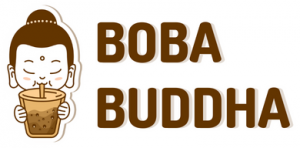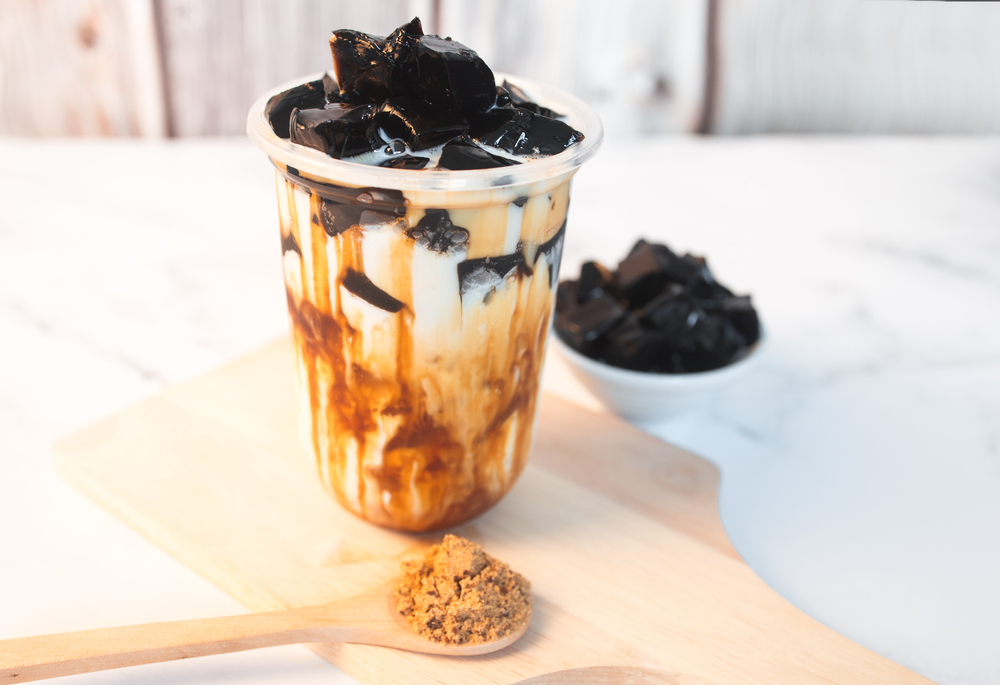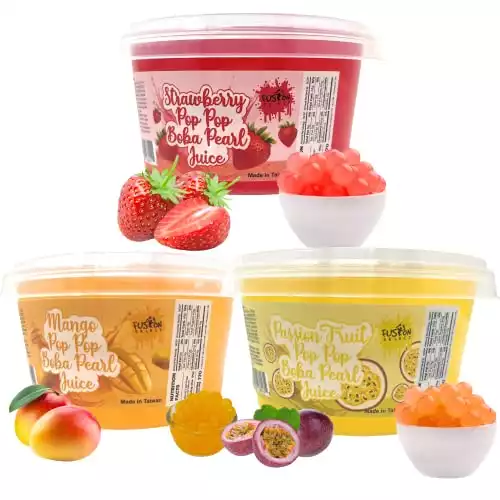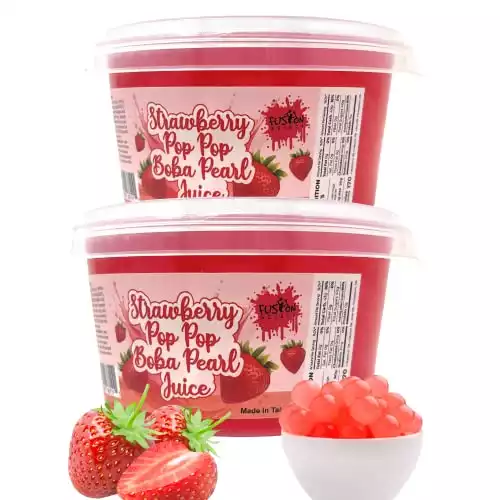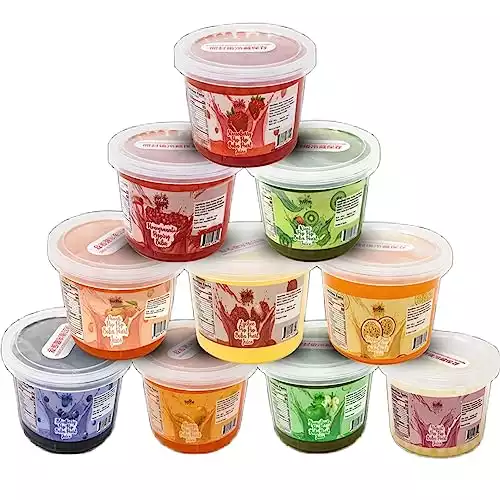Bubble tea and jelly tea have become very popular over the past few years. Traditional boba tea contains spherical tapioca pearls made from cassava root. Jelly drinks have square or rectangular jelly pieces at the bottom. The three most significant differences between the teas are the flavor, texture, and ingredients.
Flavor
Deciding between these two toppings depends on what flavors you want to pair with your boba tea. Jellies have a more noticeable and fruity taste because the flavors can be cooked into them. On the other hand, tapioca pearls are generally cooked with a little bit of sugar and then steeped in flavored syrup.
Tapioca Pearls
Brown Sugar Boba Pearls
This is the most traditional flavor. It has a toasted, sweet caramel flavor. Some brown sugar is added to the dough before the pearls are cooked. After, the tapioca balls are soaked in brown sugar syrup for between ten minutes and four days.
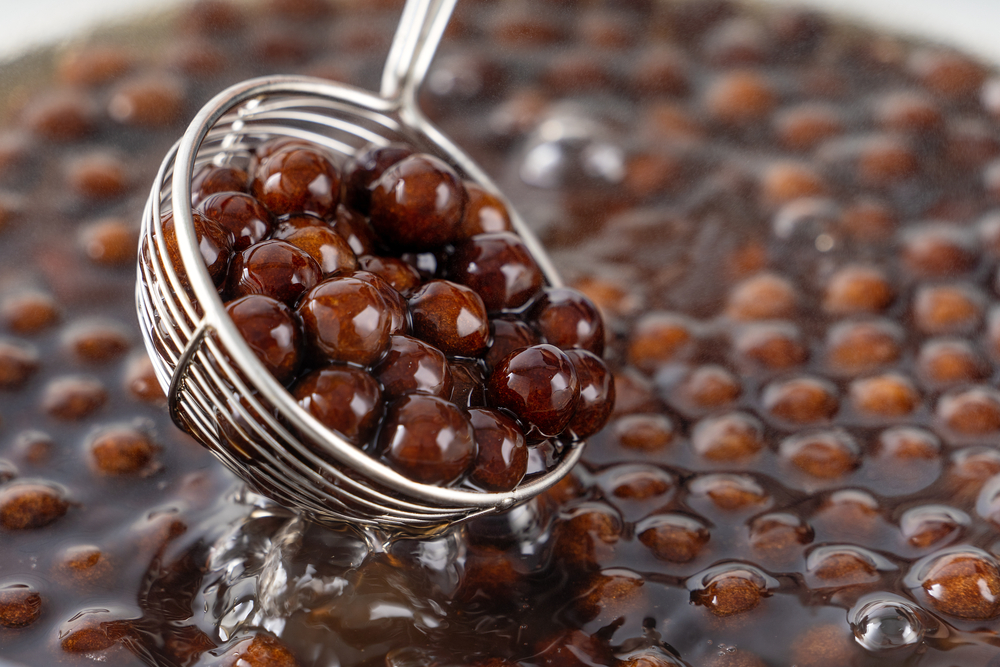
Fruit Flavored Boba Pearls
Fruit-flavored tapioca pearl dough is made the same way as brown sugar boba, but instead of being soaked in brown sugar syrup afterward, the pearls are steeped in fruit syrup. Any flavor of fruit syrup can be used, but strawberry, mango, passionfruit, watermelon, and orange are a few of the most popular options.
Jellies
Rainbow Jelly
This popular flavor is made from coconut meat, giving it a tropical flavor. This colorful treat often contains different fruit flavors, each of which is a different color giving the tea a “rainbow” vibe. These flavors usually include passion fruit, mango, and pineapple.
If you prefer a specific fruit flavor for your jelly tea, you must request that particular flavor because a traditional rainbow jelly tea will have a mixture of flavors and colors.
Coffee Jelly
These delicious jellies are made with real coffee and make a great addition to your milk tea. Sometimes agar (a gelatin-like substance that comes from seaweed) is used in place of gelatin, making the jellies vegan and giving them a more authentic texture. These jellies are sweet, naturally caffeinated, and have a nice coffee flavor.
Grass Jelly
This herbal Asian dessert can be enjoyed on its own or added to boba teas. It often has added sweeteners to enhance the taste. Traditionally it has a slightly minty flavor with just a hint of bitterness that pairs well with sweet milk teas. Grass jelly often comes pre-prepared in a can, or you can use grass jelly powder to make it at home. This jelly also has several health benefits, such as promoting digestive functions and helping to control high blood sugar levels.
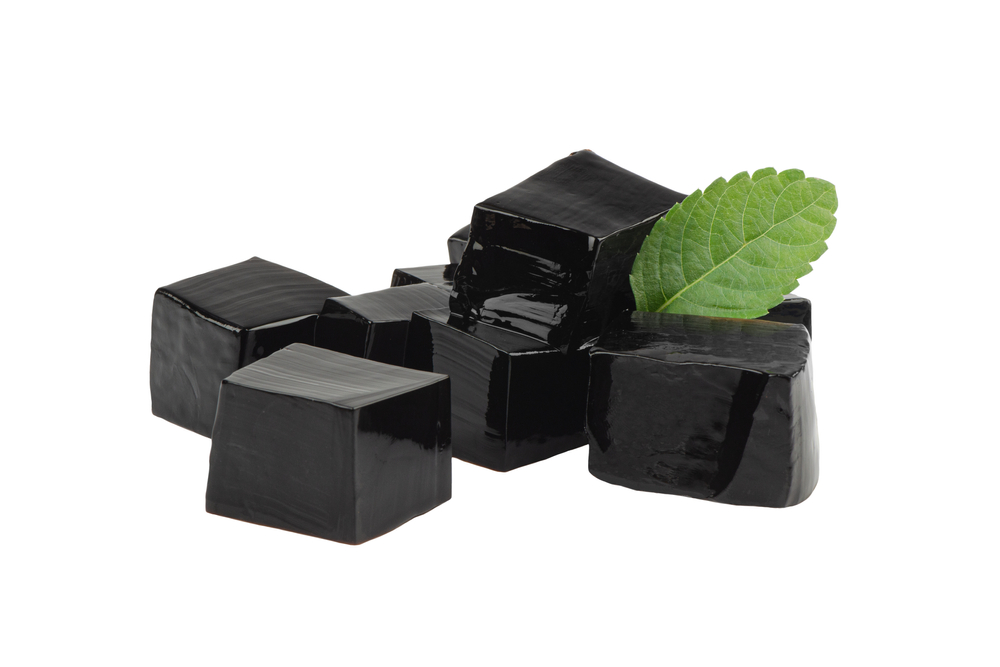
Lychee Jelly
Lychee is another popular flavor for boba tea jellies. The tropical fruit has a sweet citrus flavor, making it a great addition to fruit and bubble teas.
Though lychees can sometimes be hard to find, lychee jellies or syrups are readily available in Asian markets or online. With the syrup, you might consider making homemade lychee jellies.
Aloe Vera Jelly
The refreshing taste of aloe vera jelly pairs very well with fruity tea drinks. It is not overly sweet and has a very subtle flavor. Most of the flavor comes from added sugar. The texture is slimy with a slight wet crunch.
Texture
Bubble teas traditionally come with tapioca pearls in them. However, jellies have become increasingly popular in previous years. Rather than the chewy, firm texture that tapioca balls have, jellies are soft. Additionally, jellies are square or rectangular-shaped, while boba pearls are round.
If you’re looking for something completely different, try popping boba. These jelly-like balls pop when bitten into and burst with fruit flavors. Here are some of my favorite varieties:
|
|
|
|
Ingredients
There are several choices when it comes to boba jellies. That said, the ingredients will differ depending on the type you choose to try. While boba tea pearls are made from tapioca starch and water, jellies are typically made from agar (the gelatin-like substance that comes from seaweed).
A few exceptions include the following:
- Grass jelly – made by boiling the leaves and stems of mesona plants and combining the liquid with either cornstarch or rice flour.
- Coffee jelly – made of coffee and thickened with an agent such as cornstarch.
- Rainbow jellies – made of fruit juice and coconut meat.
Though the ingredients differ, one thing remains the same: they are delicious additions to your iced tea.
Which Topping is Healthier?
Remember that almost all boba drink toppings from a bubble tea shop are sweetened. Other factors aside, the added sugars are the unhealthiest part of bubble teas and their toppings.
A half cup of tapioca pearls has approximately 272 calories. A serving of bubble tea jelly has between 50 and 190 calories, depending on the flavor. Neither option supplies a significant amount of nutritional value. For a more detailed explanation of how the calories in a pearl milk tea add up, check out this article.
Luckily, it is possible to make both of these delicious toppings at home, which means you can control the amount of added sugars and sweeteners, making them healthier.
Does It Matter Which Tea You Order With Which Topping?
Though you are free to pick and choose, some pairings are too good to pass up. A few of my favorites include:
- Thai milk tea with coffee jelly – The deliciously sweet coffee flavor gives the creamy tea a fantastic taste.
- Coconut milk tea with rainbow jelly – The combination of fruit flavors and coconut milk makes this sweet treat irresistible.
- Traditional boba tea – This tea is made from oolong or black tea with brown sugar tapioca pearls.
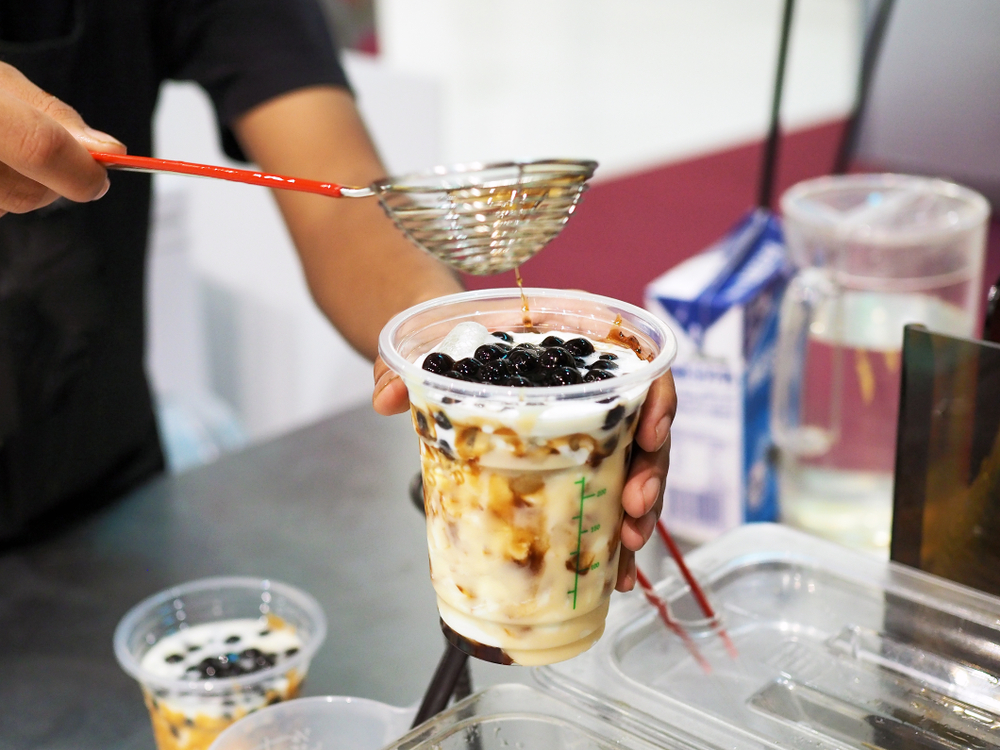
Should You Try Jelly or Tapioca Pearl Boba?
If you are looking to experience a traditional bubble tea experience, we suggest you go with tapioca pearls. However, jellies are a great option if you want to venture out and try something more on the fruity side.
